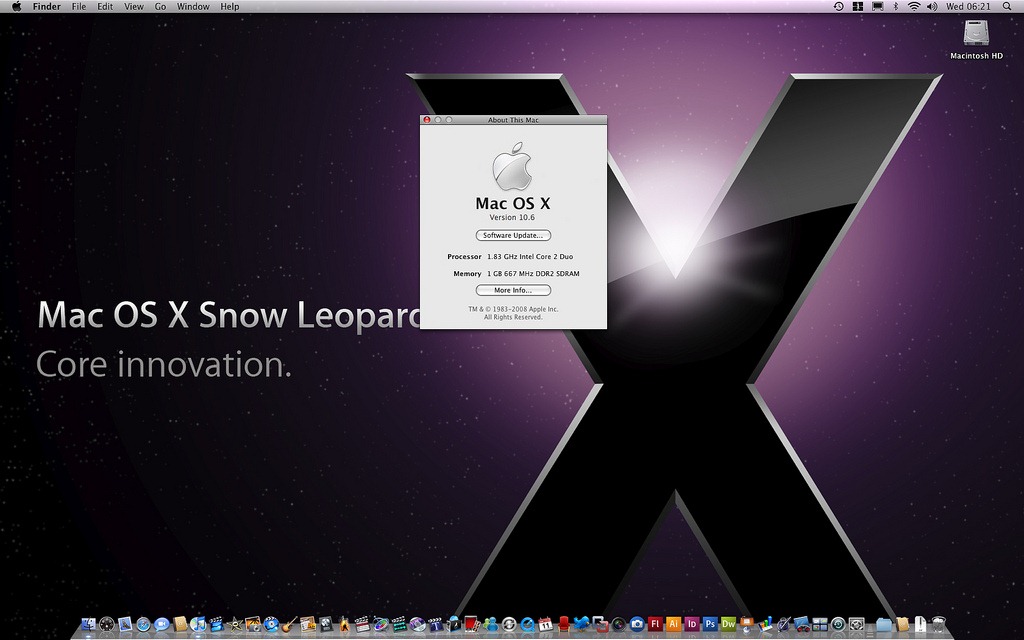

- #Free antivirus for mac 10.6.3 install#
- #Free antivirus for mac 10.6.3 update#
- #Free antivirus for mac 10.6.3 software#
Any website that prompts you to install a “codec,” “plug-in,” "player," "extractor," or “certificate” that comes from that same site, or an unknown one, is untrustworthy.
#Free antivirus for mac 10.6.3 software#
That means, in practice, that you never use software that comes from an untrustworthy source, or that does something inherently untrustworthy.


If you're smarter than he thinks you are, you'll win. The threat therefore amounts to a battle of wits between you and the malware attacker. With the possible exception of Java exploits, all known malware circulating on the Internet that affects a fully-updated installation of OS X 10.6 or later takes the form of so-called "trojan horses," which can only have an effect if the victim is duped into running them. The first and best line of defense is always your own intelligence. XProtect, Gatekeeper, and MRT reduce the risk of malware attack, but they're not absolute protection. It notifies you if it finds malware, but otherwise there's no user interface to MRT.
#Free antivirus for mac 10.6.3 update#
It checks for, and removes, malware that may have evaded the other protections via a Java exploit (see below.) MRT also runs when you install or update the Apple-supplied Java runtime (but not the Oracle runtime.) Like XProtect, MRT is presumably effective against known attacks, but maybe not against unknown attacks. MRT runs automatically in the background when you update the OS. Starting with OS X 10.8.3, a third layer of protection has been added: a "Malware Removal Tool" (MRT). Never click through any request for authorization without thinking. "Sandboxed" applications may prompt for access to private data, such as your contacts, or for access to the network.
An App Store developer could find a way to bypass Apple's oversight, or the oversight could fail due to human error.įor the reasons given above, App Store products, and other applications recognized by Gatekeeper as signed, are safer than others, but they can't be considered absolutely safe. A malware attacker could get control of a code-signing certificate under false pretenses, or could simply ignore the consequences of distributing codesigned malware. It can easily be disabled or overridden by the user. It has, however, the same limitations as XProtect, and in addition the following: Gatekeeper doesn't depend on a database of known malware. That may not mean much if the developer lives in a country with a weak legal system (see below.) His identity is known to Apple, so he could be held legally responsible if he distributed malware. Software certified in this way hasn't necessarily been tested by Apple, but you can be reasonably sure that it hasn't been modified by anyone other than the developer. By default, applications and Installer packages downloaded from the network will only run if they're digitally signed by a developer with a certificate issued by Apple. Starting with OS X 10.7.5, there has been a second layer of built-in malware protection, designated " Gatekeeper" by Apple. Software installed from a CD or other media is not checked. It only applies to software downloaded from the network. It can be bypassed by some third-party networking software, such as BitTorrent clients and Java applets. This feature is transparent to the user, but internally Apple calls it "XProtect." The malware recognition database is automatically checked for updates once a day however, you shouldn't rely on it, because the attackers are always at least a day ahead of the defenders. All versions of OS X since 10.6.7 have been able to detect known Mac malware in downloaded files, and to block insecure web plugins. OS X now implements three layers of built-in protection specifically against malware, not counting runtime protections such as execute disable, sandboxing, system library randomization, and address space layout randomization that may also guard against other kinds of exploits.Ģ. If you find this comment too long or too technical, read only sections 5, 6, and 10. If you have reason to suspect that you're the target of such an attack, you need expert help. That threat is in a different category, and there's no easy way to defend against it. It does not apply to software, such as keystroke loggers, that may be installed deliberately by an intruder who has hands-on access to the victim's computer. This comment applies to malicious software ("malware") that's installed unwittingly by the victim of a network attack.







 0 kommentar(er)
0 kommentar(er)
